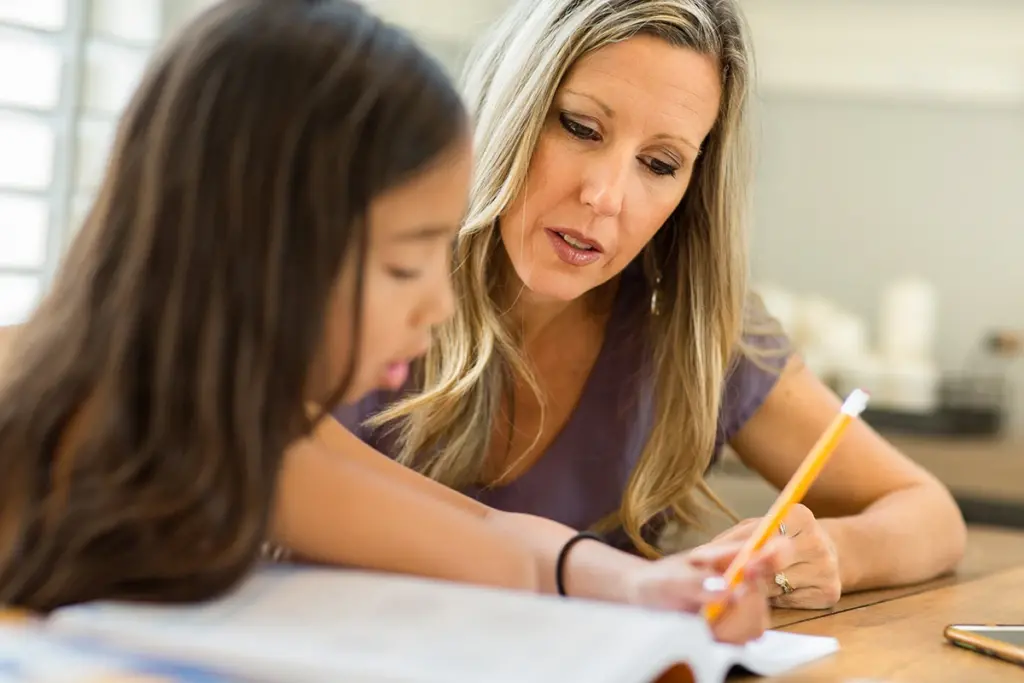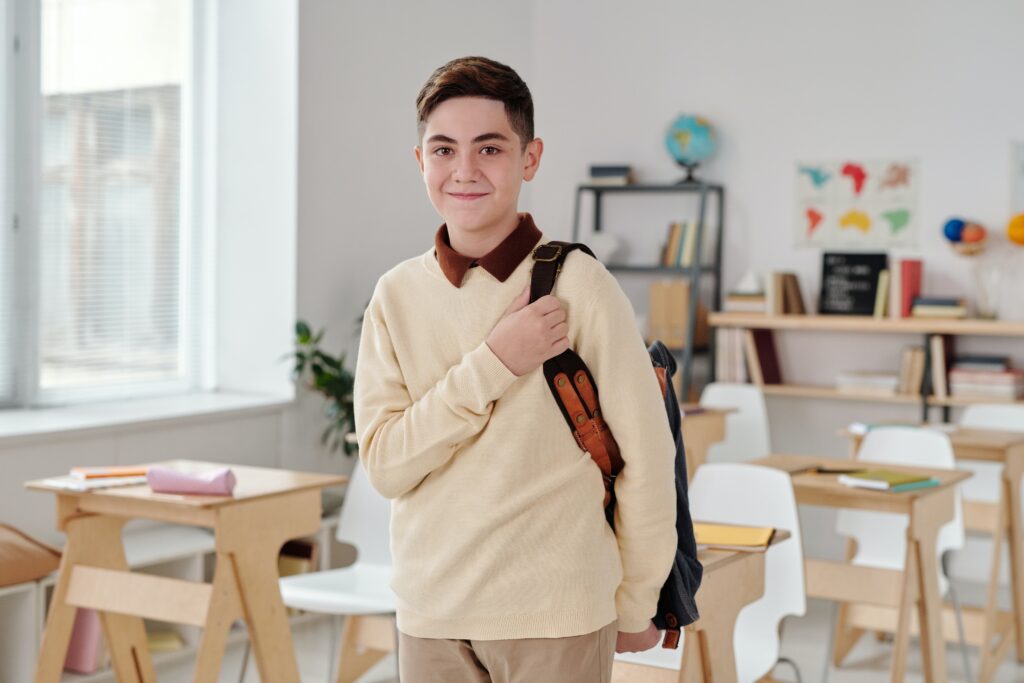As a parent, it’s totally normal to wonder if certain behaviors in your child are just a part of growing up or something more, and ADHD (Attention-Deficit/Hyperactivity Disorder) is one of those topics that often raises questions and concerns. I’m willing to bet that most of us have heard about ADHD, but there’s still a lot of misinformation out there. Some might think it’s just about kids who are hyper and can’t sit still, while others believe it’s overdiagnosed or just a phase kids grow out of. The truth is that ADHD is a complex condition that affects children in different ways, and understanding it can make a big difference.
Early identification is key. Recognizing the signs of ADHD early on can help you support your child in a way that meets their unique needs, both at home and at school. The earlier you understand what’s going on, the sooner you can take steps to ensure they grow academically, socially, and emotionally. In this post, we’ll explore how to spot the signs of ADHD and why it’s important to address them sooner rather than later. Let’s dive in and demystify what ADHD really looks like in children.
What is ADHD?
ADHD is more than just occasional daydreaming or bursts of energy; it’s a neurological condition that can have a significant impact on a child’s daily life. There are three main types of ADHD, and each presents itself differently.
The Inattentive Type
This is what people typically refer to as ADD. Kids with this type of ADHD might seem like they’re off in their own world. They may have trouble focusing on tasks, forget instructions, or lose things frequently. You might notice your child struggling to finish homework, even if they understand the material, simply because their mind tends to wander.
The Hyperactive-Impulsive Type
This type is more about constant motion and acting without thinking. These kids might be the ones who can’t sit still or stay in their seat, talk nonstop, or blurt out answers in class. They often seem to have an endless supply of energy and may struggle with patience and waiting their turn.
The Combined Type
This is the most common type of ADHD. It means your child might experience a mix of both inattentive and hyperactive-impulsive symptoms. This can look like difficulty focusing one moment and then bouncing off the walls the next.
According to the CDC, ADHD affects about 11.3% of children in the U.S., which means it’s more common than you might think. It can influence different aspects of a child’s life, from how they perform in school to making friends and even their routines at home. Understanding the type of ADHD your child might have is a crucial step in helping them navigate these challenges.
Recognizing ADHD in Young Children
Spotting ADHD in young children can be tricky, especially because many behaviors associated with it are pretty common in toddlers and preschoolers. But there are certain indicators that might hint at something more.
Behavioral Signs
One of the early signs to watch for is difficulty focusing on activities that require continuous attention, like reading a book together or working on a puzzle. If your little one consistently moves from one activity to the next without finishing anything or seems easily distracted even during things they usually enjoy, it could be a sign of ADHD.
Another common behavioral sign is excessive talking or interrupting. If your child tends to dominate conversations, blurts out answers, or struggles to wait their turn during playtime, these behaviors might be more than just exuberance; they could point to impulsivity.
Physical Signs
On the physical side, kids with ADHD often seem to have endless energy. Maybe your child is always on the move, running around the house, climbing on furniture, or squirming during meals. It could be more than just typical toddler restlessness; they might find it genuinely hard to sit still, even for short periods.
A Real-Life Scenario
Let’s consider a scenario: Imagine you’re at a family gathering. While other kids are sitting and playing a board game, your child can’t seem to stay in one spot. They’re bouncing between the kitchen, living room, and backyard, talking non-stop and interrupting conversations. Even during story time, they’re fidgeting and shifting in their seat. You chalk it up to excitement, but if this kind of behavior is consistent across different settings, it might be worth paying attention to
Recognizing these patterns early on can help you decide whether it’s time to seek professional advice in order to ensure your child receives the support they need in order to be successful.

Signs of ADHD in School-Aged Children
As your child grows and starts school, the signs of ADHD can become more noticeable, especially when compared to their peers. School-aged children face new challenges that require focus, organization, and social interaction, which are areas in which kids with ADHD might struggle.
Academic Challenges
Inconsistent performance with schoolwork is one of the first signs many parents notice. Your child might grasp concepts quickly one day but forget them the next. They may struggle to complete homework, especially if it involves multiple steps, like writing an essay or solving a multi-part math problem. It’s not just about trouble understanding the material; it’s about staying focused long enough to finish the task.
You might also see issues with following directions, particularly those that require several steps. For example, a teacher might ask the class to “write down homework assignments, put away their books, and line up,” but your child might only manage one or two of those steps before getting distracted.
Social and Emotional Indicators
ADHD can also impact your child’s ability to make and maintain friendships. They might have trouble picking up on social cues or waiting their turn in conversations or games. This can lead to misunderstandings or frustration in their relationships.
Emotional regulation is another area where kids with ADHD often struggle. You might notice frequent outbursts, mood swings, or difficulty calming down after getting upset. All children have moments of frustration or emotional highs and lows, but with ADHD, these behaviors tend to be more intense and persistent.
How It Differs from Typical Behavior
It’s important to remember that all kids have “off days.” They might forget homework, have a meltdown, or struggle to share. But with ADHD, the key difference is the consistency and intensity of these behaviors. If you’re noticing a pattern that affects your child’s ability to succeed in school or form healthy relationships, it’s worth exploring further.
ADHD vs. Other Conditions
It’s easy to confuse ADHD with other conditions because many symptoms overlap. Inattention, restlessness, and difficulty with tasks can also show up in kids dealing with anxiety, learning disabilities, and sleep disorders.
Anxiety
Anxiety can look a lot like inattention. A child who’s constantly worried might appear distracted or unfocused, but it’s not because they can’t pay attention; it’s because their mind is preoccupied with dealing with anxious thoughts. You might notice they have trouble concentrating, especially in situations that trigger their anxiety, like tests or social interactions.
Learning Disabilities
Learning disabilities can also complicate the picture. A child with a learning disability might struggle to complete tasks or follow instructions, not because they aren’t paying attention, but because they have difficulty processing the information. In these cases, it’s important to distinguish between challenges with learning and challenges with focus.
Sleep Disorders
Sleep plays a huge role in a child’s ability to focus and control their behavior. Kids with sleep disorders, such as sleep apnea or insomnia, might seem inattentive, hyperactive, or irritable during the day simply because they aren’t getting enough rest. Addressing sleep issues can sometimes fix what appear to be ADHD symptoms.
Environmental and Situational Factors
We also have to consider environmental and situational factors. Family stress, inconsistent routines, or trauma can all affect a child’s behavior in ways that mimic ADHD. If your family is going through a tough time, your child might act out or have trouble focusing, but these behaviors may improve once things are more stable.
Understanding what’s behind your child’s behavior is crucial for finding the right support. A thorough evaluation can help pinpoint whether it’s ADHD or something else, so your child gets the help they need.

Seeking Professional Help
If you’re starting to notice signs of ADHD in your child, seeking a professional diagnosis is a great next step. This can help you understand what your child needs and how best to support them.
Who to Talk To
Start by talking to your child’s pediatrician. They can do an initial evaluation and, if necessary, refer you to specialists like child psychologists or psychiatrists. School counselors are also a fantastic resource. Since they work closely with teachers, they can offer insights into how your child is doing in the classroom.
What to Expect
The diagnostic process usually involves a few steps. You’ll be asked about your child’s behavior at home, and teachers will share observations from school. This might include questionnaires, interviews, and sometimes direct observation. The goal is to get a complete picture of how your child is managing both at home and at school.
Letting Go of Stigma
It’s normal to have concerns about what a diagnosis might mean, but remember, getting help is a positive step. It’s not about labeling your child; it’s about opening doors to the right support. Working together with professionals, teachers, and caregivers creates a team that’s focused on helping your child succeed.
By addressing concerns early, you’re setting your child up for greater success academically, socially, and emotionally.
The More You Know
Recognizing the signs of ADHD in your child can feel overwhelming, but remember, you’re not alone. Many parents face this journey, and seeking help is a proactive step that shows your commitment to your child’s well-being.
Children with ADHD often have incredible strengths, such as creativity, energy, and a unique way of seeing the world. With the right support, they can flourish academically and socially. It’s all about finding strategies that work for them and creating an environment where they can be successful.
As you move forward, it’s important to be patient with yourself and your child. Every step you take, from consulting a professional and working with teachers to researching all the things about ADHD, is a step toward helping your child reach their full potential. Your support and understanding are key in helping your child navigate their challenges and celebrate their strengths.

